International Concrete Technology Forum
December 12-13, 2012 - Doha, Qatar
In association with

The National Ready Mixed Concrete Association and Grey Matters Consultancy for the 2012 International Concrete Technology Forum, December 12-13, in Doha, Qatar. The conference brought researchers and practitioners together to discuss the latest advances, technical knowledge, continuing research, tools, testing and specifications for concrete. Researchers, engineers, architects, contractors, concrete producers, public works officials, material suppliers, and concrete industry professionals.
Principal Sponsors
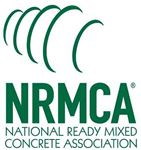 |
NRMCA, based in Silver Spring, MD, represents the producers of ready mixed concrete and the companies that provide materials, equipment and support to the industry. It conducts education, training, certification, promotion, research, engineering, safety, environmental, technological, lobbying and regulatory programs (www.nrmca.org). |
|
|
Grey Matters Group of Companies is a Dubai-based professional entity established to serve the construction and concrete industries in the Gulf and Middle East regions. Grey Matters Consultancy conducts third party assessments, technical control, inspections, consultancy, training and certifications on Concrete Technology (www.greymatters.ws). |
Hosting Partner

Conference Partners
 |
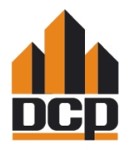 |
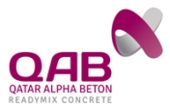 |
Gold Partners
 |
|
 |
|
Conference Supporters
 |
|
Conference Endorsers
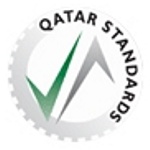 |

|
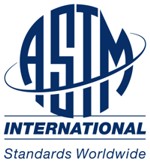 |
Media Sponsor
![]()
Session Topics
World renowned speakers presented the latest advances, technical
knowledge, research, tools and solutions for design, testing and
modeling concrete performance including:
- Hardened concrete properties
- Plastic concrete properties
- Concrete applications
- Performance based specifications
- Performance prediction
- Sustainability
- Green concrete
Speakers
VIP Contributors
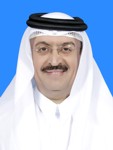 Dr. Mohammed bin Saif
Al Kuwari
Dr. Mohammed bin Saif
Al Kuwari
Assistant Undersecretary Standardization and Laboratories Affairs;
Qatar Ministry of Environment
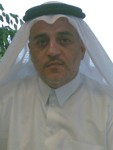 Eng.
Khalid Al-Emadi
Eng.
Khalid Al-Emadi
Manager of Quality, Safety and Environment Department of Ashghal
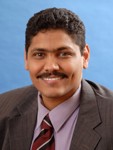 Dr. Esam Elsarrag, Ph.D.
Dr. Esam Elsarrag, Ph.D.
Research Manager at Gulf Organization for Research
& Development
Speakers
 Hilal
El-Hassan, Ph.D.
Hilal
El-Hassan, Ph.D.
Hilal El-Hassan is a Research Associate at McGill
University in Montreal, Canada. Mr. El-Hassan finished his PhD degree in
civil engineering majoring in the structural and environmental
departments under the supervision of Professor Yixin Shao. He is a
member of a team of graduate and doctoral students investigating the
effect of early-age carbonation on concrete products including concrete
masonry units, concrete pipes, and concrete pavement. Mr. El-Hassan's
work on concrete masonry units examined the ability to permanently
sequester carbon dioxide gas in the form of the thermodynamically stable
calcium carbonate, while thriving to maximize the uptake in order to
reduce global carbon dioxide emission. He has several publications in
civil engineering journals including ACI and ASCE material journals
discussing the different aspects of concrete carbonation and its effect
on concrete microstructure.
Sustainable Green Concrete Blocks Through Carbonation
Curing
This presentation
investigates the possibility of replacing steam curing by CO2
curing and the CO2 utilization capacity in concrete block
production. The effect of initial curing on CO2 curing of
lightweight concrete blocks was examined with full-size blocks in
durations ranging from 0 to 18 hours. The subsequent 4-hour CO2
curing was then carried out in a chamber under a pressure of 0.1 MPa.
The early-age and 28-day compressive strength of steam cured,
carbonated, and hydrated samples were compared. Due to loss of water
caused by initial curing, the carbonated concretes exhibited lower
28-day strength in comparison to hydrated and steam-cured samples. A
water spray mechanism was devised to restore the lost water, and
ultimately, the late compressive strength was comparable among samples.
The durability of carbonated, hydrated, and steam cured concrete blocks
have been studied through the resistance to freeze-thaw.
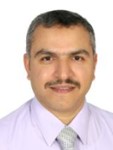 Dr.
Eng. Noureddin Issa Daas
Dr.
Eng. Noureddin Issa Daas
Dr. Daas is an expert of standards for the Sector of Construction
and Building Material Specifications, Department of Standards and
Metrology, Standardization and Laboratories Affairs, Ministry of
Environment.
QCS2010-Major Changes and the Future Challenges
Dr. Daas will be
highlighting the major changes in the new QCS2010 and he will be stating
the future challenges.
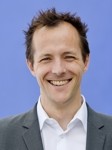 Dr.-Ing.
Till Felix Mayer
Dr.-Ing.
Till Felix Mayer
Till Felix Mayer is a specialist in the field of reinforcement
corrosion, corrosion monitoring and service life design of reinforced
concrete structures. He studied civil engineering at the RWTH Aachen/Germany
and the Imperial College, London and received his doctoral degree from
the Technical University of Munich/Germany. During his time as a
research fellow at the Technical University of Munich he worked in the
fields of service life design and service life management of
infrastructure projects with respect to reinforcement corrosion. He is
now a partner in the engineering firm Schiessl Gehlen Sodeikat in
Munich/Germany and the managing director of the Sensortec GmbH. During
his professional career he has carried out the durability design and
developed service life management procedures for various large
infrastructure projects in Europe, the USA, Qatar and China in which he
combines the results of a probabilistic durability design with the
results of corrosion monitoring in order to update the original
prognosis.
Life Cycle Management of Concrete Structures – From Durability Design
to Corrosion Monitoring
On the background of scarce public resources, life cycle management of
infrastructure systems has gained increasing importance. The durability
design is one of the key elements. Depending on the governing
deterioration mechanisms, it can be carried out on different levels of
detail and thus enables an optimization of durability by means of
optimized concrete composition and choice of binder. There are
sufficiently well calibrated deterioration models available for the
probabilistic modeling of reinforcement corrosion. Quality control tools
during construction and after completion allow for an assessment of the
actual quality and the comparison with the requirements formulated
during the design stage. As the durability modeling is connected with
uncertainties concerning some of the input parameters, corrosion
monitoring during the actual service life can be employed in order to
subsequently update the original durability prognosis, rendering the
owner of the structure in a position where he will always be well
informed about the current condition state of his structure.
 Frances Yang, PE, LEED AP
Frances Yang, PE, LEED AP
Frances Yang is a structures and materials sustainability specialist
in the San Francisco office of Arup. With combined background in
architecture and engineering, Frances brings an understanding of life
cycle assessment (LCA), performance-based seismic design, and building
envelope integration to her structural design work. Further training in
the Arup London Research and Development office has equipped her to
become an Arup global expert on LCA-based tools and embodied impacts of
construction materials.Frances holds a LEED AP and California PE. She
has been active on the Structural Engineering Association of Northern
California’s Sustainable Design Committee since its inception. More
recently she has chaired the LCA working group of the ASCE Structural
Engineering Institute Sustainability committee. Her current assignments
in research and development, facades, infrastructure, and sustainability
groups have furthered her interest in how materials and structural
systems contribute to whole-life sustainability performance of our built
environment. Ms. Yang will present:
Quantifying the Real vs. Methodological Variability
in Embodied Carbon Footprints
Life-Cycle Assessment (LCA) is the method which most fully accounts
for the environmental impacts of structures. The method provides
feedback for our engineering design and specification choices. However,
there is debate in the design community that LCA results, on buildings
not their own, can currently provide any meaningful feedback without
standardized methodology in conducting the LCA. Arup sought to answer
this question in a study comparing the embodied carbon footprint of
different buildings, by distinguishing the variability due to
methodology versus that due to design choices. In this study
commissioned by the Concrete Centre, LCA principles are used to compare
embodied CO2 levels related to project choices within the structural
engineer’s control, including structural framing schemes, cement content
in concrete mix, and recycled content. The structural impacts are also
compared to transport, construction, and architectural components of the
buildings. This comparison is demonstrated for three buildings that
represent typical design and construction of commercial, school, and
hospital structures.
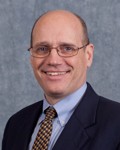 Lionel Lemay PE, SE, LEED AP
Lionel Lemay PE, SE, LEED AP
Mr. Lemay is Sr. Vice President, Sustainable Development for the
National Ready Mixed Concrete Association (NRMCA). He manages programs
that assist producers, contractors, and designers transform concrete
manufacturing and construction to improve overall sustainability of the
concrete industry. He manages programs to educate concrete industry
professionals, engineers and architects on the proper use and design of
concrete for buildings, parking areas, roadways, and other applications.
He has written numerous articles on concrete construction and is
co-author of the McGraw-Hill book Insulating Concrete Forms for
Residential Design and Construction. Mr. Lemay is a Registered
Professional Engineer and Structural Engineer in the State of Illinois.
He is also a LEED Accredited Professional. He is a member of the
American Concrete Institute and serves on ACI committees 130 (concrete
sustainability), 301 (concrete specifications), and 332 (residential
concrete). He is chairman of the American Society of Civil Engineers
Concretes and Cementitious Materials Committee. Mr. Lemay holds a
bachelors and masters degree in civil engineering and applied mechanics
from McGill University in Montreal, Canada. Mr. Lemay will present:
Specifying Sustainable Concrete
Nearly every project uses concrete in some way. Concrete plays a key
role in nearly every structure we build today including buildings,
bridges, homes and infrastructure. As a result, concrete plays a
significant role in our built environment. Performance based
specifications for concrete can substantially help improve the
sustainability of structures. Prescriptive requirements such as minimum
cement content or maximum water to cement ratio are well known
specification requirements that increase the environmental footprint of
concrete. Likewise there are at least 20 other requirements that are not
so well known. This paper will outline how concrete performance can be
maintained while removing those requirements. The resulting
specification can help attain concrete with the desired performance and
a lower environmental footprint.
 Tien Peng, LEED AP, CGP, PMP
Tien Peng, LEED AP, CGP, PMP
Tien Peng is senior director of sustainability, codes and standards
for NRMCA. Mr. Peng will provide technical expertise to the building
codes development and the growing adoption of sustainability standards
for buildings. Prior to joining NRMCA, Mr. Peng consulted with a number
private and non-profit organizations on operational excellence as a way
to sustainability and profitability. He is a longtime advocate of
sustainability, promoting green building and social responsibility to
various businesses and has championed capacity building for vulnerable
communities in Washington State. Mr. Peng holds a master of architecture
degree from the University of Houston and a bachelor’s degree in
mechanical engineering from State University of New York at Stony Brook.
Mr. Peng will present:
Staying in the Game with LEED v4
LEED v4 is changing with a new version due out next year. The green
building movement continues to gain momentum as developers, government
agencies and designers build structures to minimize environmental impact
using the new standards. To take full advantage of this movement and be
a participant in the process, you have to have a detailed understanding
of the design concepts and guidelines used in LEED v4. And although
concrete will still help meet many of the requirements there are new
concepts that will provide the concrete industry with both opportunities
and challenges. In LEED v4, there are new credit categories, increased
technical rigor, and revised point distribution that will affect how
concrete is specified and used in green building. Environmental Product
Declarations, life cycle assessment, disclosure of chemicals of concern
and responsible extraction of raw materials are just a few of the
concepts you will learn about in this session.
Hotel
The 2012 International Concrete Sustainability Conference was held at the Oryx Rotana in Doha.
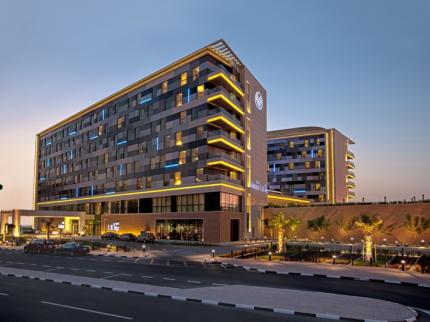 |
|
 |
 |
For more details about the Doha conference contact Rabih Fakih of Grey Matters at rabih.fakih@greymatters.ws.


